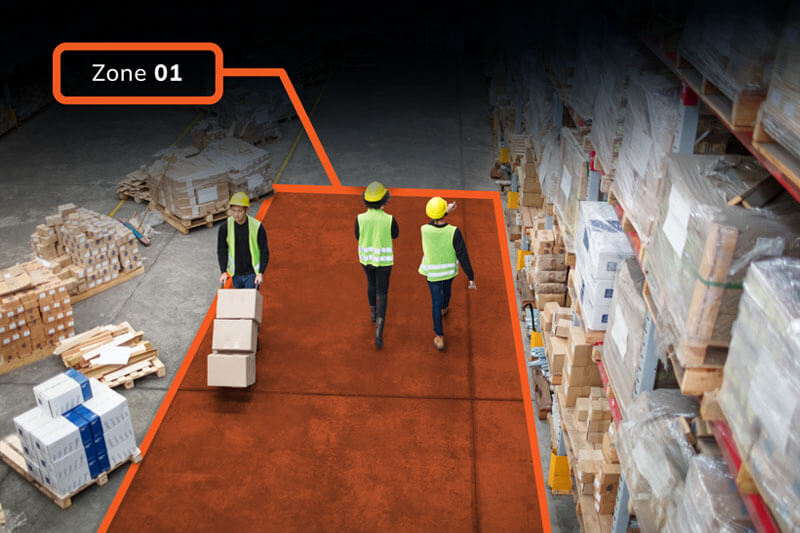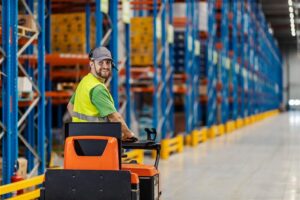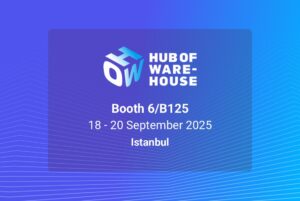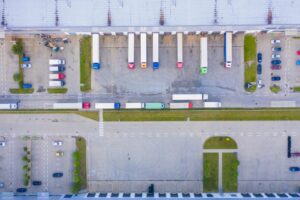Contents
How to protect sensitive areas by using geofencing technology? Here is what we will cover in this article:
What is geofencing?
Geofencing is the process of establishing a virtual fence or perimeter around a physical location and is typically a part of real-time location tracking services (RTLS). It is a tool for tracking and monitoring physical devices coming into, out of, and moving within a pre-defined area. Think of a geofence like a high-tech version of a fence around your home. If something, or someone, jumps over your fence you would want to know more information about them, such as: the time they entered, the time they left, what they looked like, what they did, etc… It allows administrators to answer these questions and more by how, when, and what devices are doing within an area.
Example of geofencing in action: red light cameras
Red light cameras are a simple example of geofencing in practice. They are typically placed at intersections with high traffic volumes and/or intersections where drivers are frequently running red lights. Red light cameras work using sensors capable of detecting if vehicles are entering the intersection when the stop light is red.
If these sensors detect a car is entering an intersection during a red light, the sensors trigger cameras to take a picture of the vehicle running the red light. The geofenced area in this example is the intersection where vehicles are driving in multiple directions depending on their respective lights being red or green. When the traffic light is green, the sensors will not trigger pictures to be taken by the cameras placed in the intersection.
This demonstrates that it is not only for monitoring objects moving into and out of certain areas, but also that different rules and actions can be enforced as a response to events happening within a geofenced area.
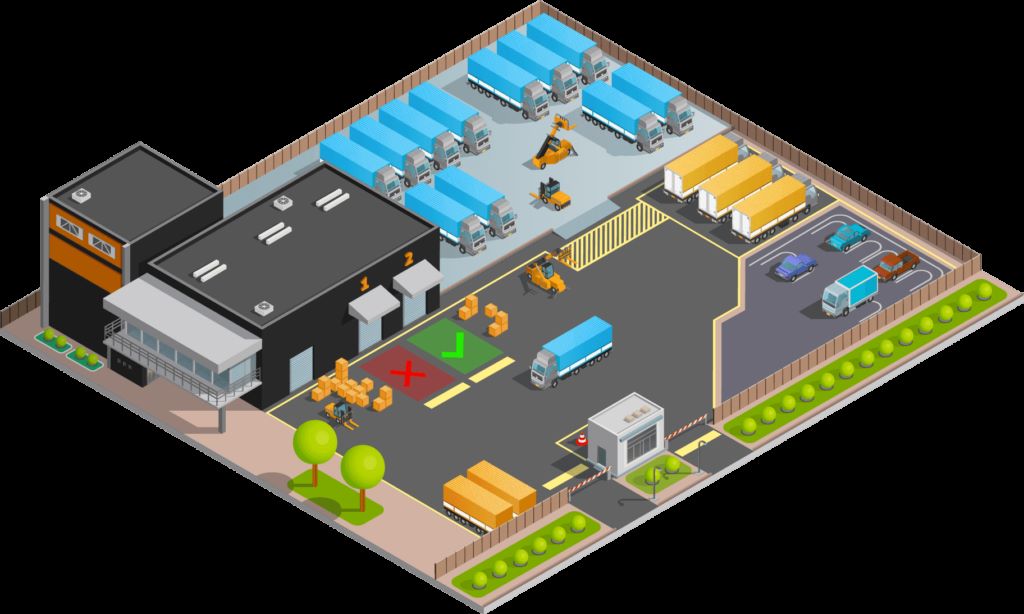
Modern technologies for geofence are far more advanced than the one done by red light cameras and are applied to solve problems faced by many industries, which we will discuss later in this article. For now, let’s focus on understanding how indoor geofencing works.
How does indoor geofencing work?
It works the same as outdoor, but faces more constraints to successfully implement due to a combination of technology interactions, physical barriers, obstructions, interference, and higher accuracy requirements.
The goal of its indoors is to create a virtual map with virtual boundaries that can monitor devices within its borders when they enter, exit, or move around. This information can be used to generate valuable data and execute specific events to occur in response to information gathered within a geofenced area, such as security alerts, mobile device management (MDM) policies, starting or stopping of machinery, prompts for people to take a certain action, and much more.
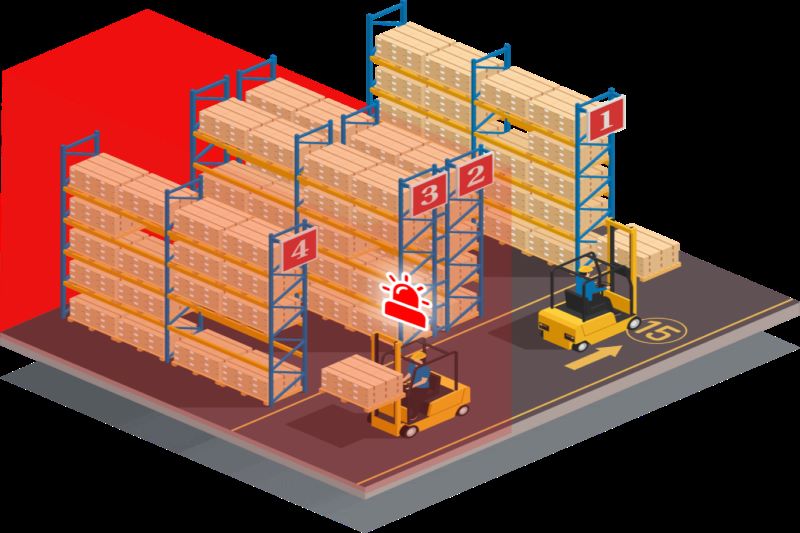
Indoor geofencing requires the use of indoor mapping platforms combined with indoor device detection technologies working together to produce data regarding the position of objects. There are three primary attributes of successful geofencing: position accuracy, ability to create and maintain virtual zones, and the ability to create rules or logic within zones.
How accurate is geofencing?
Different applications of geofence require different levels of accuracy. Indoor systems typically require more accurate location tracking compared to outdoor systems. In the example mentioned earlier a red light camera system does not need to be very accurate, but a forklift operating in an indoor environment with other people and machinery needs to be tracked with a higher level of accuracy to prevent workplace accidents.
The most accurate geofencing systems available today at the lowest cost use ultra wide-band (UWB) technology. UWB systems works through active RFID transmitters (RFID tags) and active RFID receivers (RTLS anchors) to generate the location data required for geofencing. UWB systems can generate location data with an accuracy between 5-10 cm, while other systems used for geofencing, such as wi-fi, bluetooth, and other narrow-band radio systems, have accuracies measured in meters.
What are the applications of geofencing?
Almost all industries implement and benefit from geofence. Applications range from location-based marketing to lone worker safety, and companies implementing it include a wide variety of companies such as Uber, Walgreens, Jet Blue, BMW, and Apple.
Indoor applications revolve around improving safety and efficiency. These applications include, but are not limited to:
Applications for safety
Applications for efficiency
What are the benefits of geofencing technology?
All the benefits of geofencing technologies are related to safety and efficiency of workers and workplace assets. Geofencing gives stakeholders more control and insight into their assets.
With more control stakeholders are able to increase the value of their assets while also preventing unnecessary losses to the value of their assets through misplacement, misuse, theft, and damages.
When it is implemented over an area, there is a lot of newly generated information regarding objects of interest within that area. This data can be used to create targeted and innovative solutions unique to the geofenced area related to the objects of interest being tracked.
Which industries use geofencing technology?
Geofencing technology for indoors is used in several industries such as healthcare, mining, manufacturing, aviation, marketing, and construction. In healthcare, geofenced areas can ensure seniors, infants, and patients are active and in the right location.
In manufacturing, indoor geofence is used to improve the occupational safety of workers and optimize workforce utilization. In construction, employees and equipment can be monitored in real time to ensure safety and efficient use of resources within the construction site. For the aviation industry it is used to coordinate a network of vehicles, ground support, and staff to efficiently run and automate airport services. In marketing, geofencing is used primarily for location-based advertising campaigns.
Conclusion
Indoor geofencing is important for businesses around, its value will only increase as the world increases in complexity over the coming decades. Businesses need to be able to understand how, why, when, and what their workers and other assets are doing in the workplace, and it allows businesses to generate significant data that leads to the intelligent and informed decision making required for success in the modern economy.
